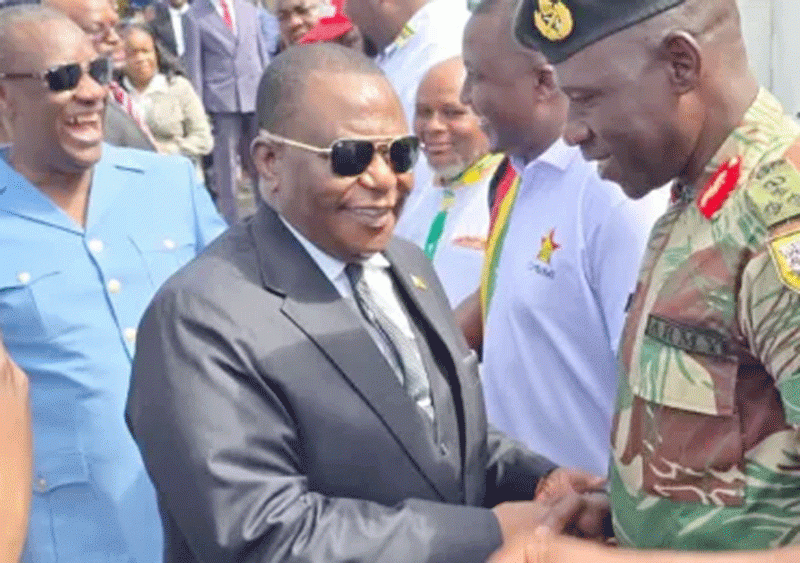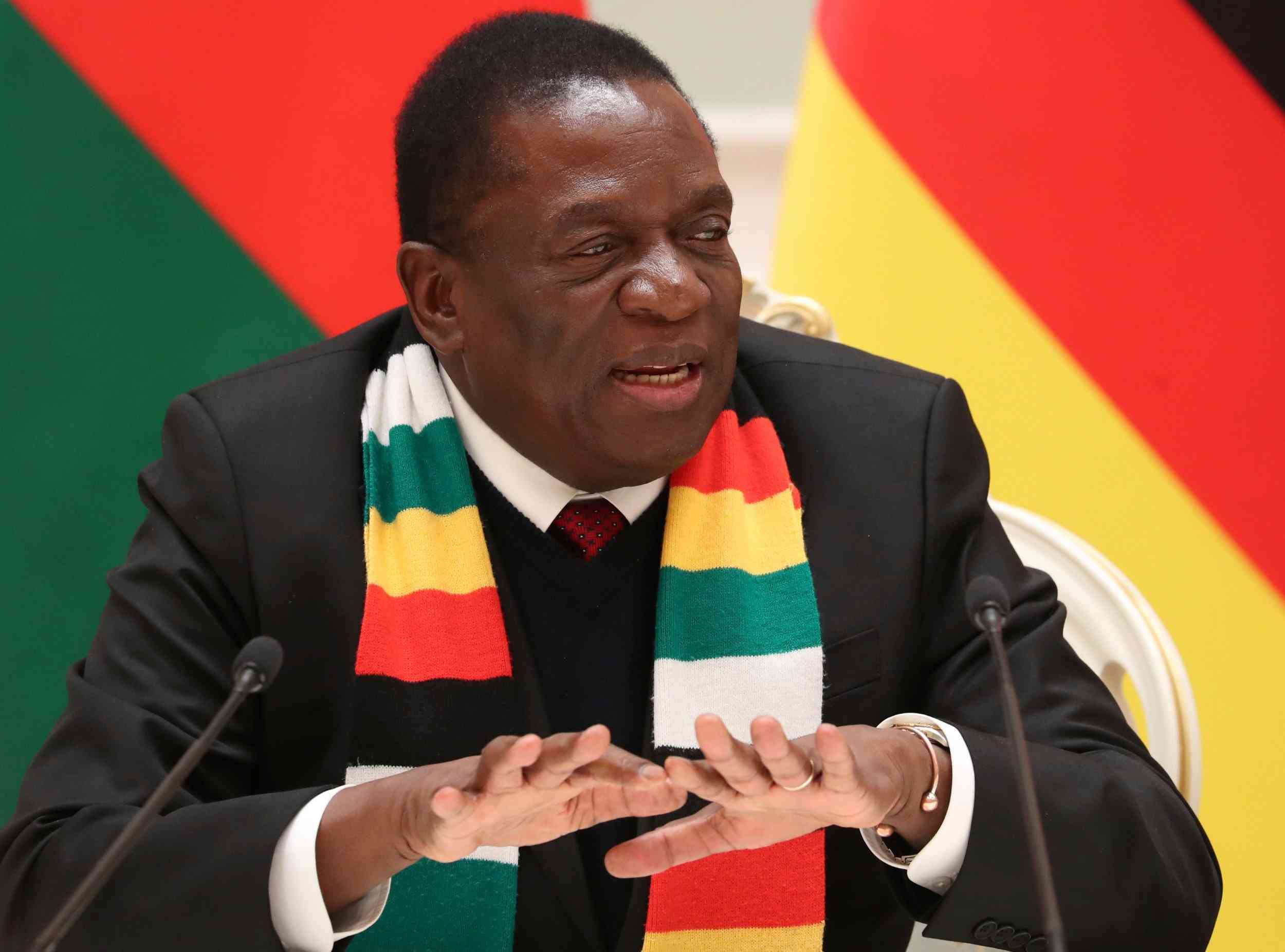
It could have been immeasurably worse. But holding back from the brink in 2023 has simply deferred vast crises to 2024.
The post-Covid world is exhausted, cash-strapped, but ultimately more fraught than for decades.
Overshadowing it all will be a flagging hyperpower, at best distracted with presidential elections, at worst tearing itself apart in voting disputes and political extremism.
The likelihood the United States will be occupied by its own traumas amplifies each risk.
The geopolitical given of a US response will be absent, fueling authoritarian ambition, or a radical upending of the global order. 2024 could make 2023 seem rational and sober.
First, it is important to take comfort that Hamas’ brutal attack on Israel, and Israel’s brutal assault on Gaza in pursuit of Hamas, has not yet led to the regional conflagration many had feared.
The Iran-backed Islamist movement Hezbollah seems to be limiting its involvement so far to manageable and predictable tit-for-tat exchanges around the border between Lebanon and Israel.
It is notable for a group founded, on the surface, to resist the Israeli occupation, to decide that the death of almost 20,000 Gazans – of whom only a third, at most, were militants, according to one IDF official’s estimate – did not merit its intervention.
- Letter from America: Is former president Donald Trump a hero or villain?
- Chidzivo, Tarakinyu clinch Kabag honours
- Letter from America: Is former president Donald Trump a hero or villain?
- The Fiddler: Is honesty the best policy?
Keep Reading
Hezbollah may still be exhausted after expending experienced fighters in Syria and beyond over the past decade and has probably seen less Iranian cash in recent years.
Its leadership may have calculated that a clash with Israel would spell the wide-scale bombing of Lebanon, render the group much less popular in its homeland, and potentially weaken it further.
Or it may simply be that large-scale conflict with Israel is not in the interests of Hezbollah’s main backer, Iran.
Tehran, most analysis suggests, did not order, appreciate, or have foreknowledge of Hamas’ October 7 attack.
Iran is still reeling from internal dissent not seen for decades, economic turmoil, and probably also from the death of its pre-eminent military figure, Islamic Revolutionary Guard Corps chief Qasem Soleimani.
Iran has turned its back on the nuclear deal former US president Donald Trump tore to pieces.
It is enriching uranium at an alarming pace – as far as we know publicly. It is perhaps at a point where the “breakout” time for it to enrich enough uranium for a nuclear weapon – something it avows it does not want – might be only 12 days, US officials assess.
Could an Iranian nuclear bomb be the next crisis to hit the region?
Is Hezbollah being held in reserve to respond if Israel and the US attack Iran’s nuclear resources?
Or are the Middle East’s authoritarian states so focused on calm, unity against Iran, and economic cooperation that the Palestinian cause is something to rage about, not act upon?
The first decision of major concern in 2024 may come from Israel’s most right-wing government yet.
Does it use this moment of relative internal unity and public US backing to shun all advice from its allies, and try to attack Hezbollah?
The Israeli public may be steeled enough by October 7 they may stomach the likely losses caused by the inevitable waves of rockets Hezbollah would send in response.
The US might be forced to deploy military assistance, given its public display of unity.
But the damage to both sides and the civilian toll would be astronomical. And Israel’s politicians are not displaying caution at present.
This potential clash has been building since the 2006 Israel-Hezbollah war, a clear understanding growing with each year that has passed that it would be monstrous when it came, and perhaps better avoided. But has that calculus changed for Israel?
The Middle East notwithstanding, the weightiest global security crisis remains Russia’s invasion of Ukraine.
Stalling by the US and European Union on aid has already damaged Ukrainians’ morale, and likely their assessment of what they can hope to achieve in the winter and spring ahead.
The billions NATO spent on Ukraine’s summer counteroffensive did not achieve the results badly needed to counter the likely impacts of the US electoral turmoil of 2024.
Now, Ukraine is toying with mobilizing another 500,000 troops to bolster its frontline losses, as Russia sends well-trained, well-equipped convict recruits – some of them drugged-up, according to the Ukrainians – in waves of suicide missions.
Moscow’s tolerance for pain – the near-zero value it places on human life – is combining with its patience and unipolar decision-making to bring it a resurgence on the battlefield.
It is unlikely to suddenly become the Russian army feared by NATO in 2021. But it can drain Ukraine, take back Ukrainian land that had been liberated, and brutally persist where Western allies will tire.
Having spent two weeks around the frontlines, it is clear Kyiv faces an existential crisis in the coming winter.
It will not survive without Western help. It cannot admit to the scale of challenges it faces without being dubbed by some US Republicans a loser, unworthy of US funding.
At a recent press conference, Ukraine President Volodymyr Zelensky was asked about his relationship with his chief of military staff, Valery Zaluzhny.
He said it was a “working” one.
But the question even being asked exposes the depths of the rifts in the administration, as blame is traded for the failed summer, and the money looks set to run out soon.
2023 was, in Russia and Ukraine, also a year in which the worst did not yet materialize.
Ukraine repeatedly attacked the Russian mainland, with missiles, drones and with foot soldiers, and found Moscow unable to wreak the apocalyptic vengeance it had long threatened were its sovereignty to be disturbed.
The West’s challenge is to be mindful of this Russian frailty, but not recklessly dismiss the Kremlin as a paper tiger.
In 2023, Vladimir Putin also faced down the most serious challenge to his rule yet.
The 48-hour rebellion led by Wagner chief Yevgeny Prigozhin, which started as a dispute between military top brass and wildly escalated into a mercenary march on Moscow, has not left an obvious dent in the Kremlin’s power.
But its elite now surely grasp the myth of Putin’s invincibility and know, too, that traitors and their entire entourage can end up in convenient plane crashes.
It is stunning that Putin survived this threat to his rule so calmly, with little enduring, public disruption.
But the fact the attempted coup happened at all must have altered the nature of his once unassailable “vertical” power.
The war’s crises have been deferred to 2024.
We will learn next year if the Russians’ resurgence on the front lines forebodes a strategy that will gain them ground, or just a temporary spike in fortune.
We will learn, too, if Western aid is drying up, and how quickly that translates into a Ukrainian collapse.
And we will also learn if Kyiv’s elite – impressively solid until now despite the Zelensky-Zaluzhny rift – can put country before interpersonal sniping, and regain the initiative.
The stakes for European security are monumental. Gains for Russia in Ukraine leave Moscow closer to Nato’s borders, and the West’s penchant for disunity and debacle painfully exposed.
The main metric for the West’s response to this crisis was always its persistence, and this has folded in less than two years. It is truly a desperate moment.
One tiny bright spot is that China has not invaded Taiwan yet, despite countless military maneuvers around it, and in the South China Sea around the Philippines.
A clock is ticking in Beijing as a demographic crisis looms in the form of an aging population and shrinking workforce, and with it, a likely economic showdown.
The Chinese Dream of Xi Jinping may struggle to deliver, and this could lead to foreign policy excesses – to be euphemistic. Taiwan is going to the polls next year, and its fate – with Biden publicly committed to put US boots on the ground in its defense – remains the wild card of the decades ahead.
The state of the world’s nuclear powers is as fraught as it has ever been. We have discussed the turmoil in the US, Russia, China and Israel.
India is cosying up to worrying authoritarian and nationalist trends.
Pakistan is again seeing an Islamist insurgency, coupled with revolving political crises.
And North Korea is giving old artillery munitions to Moscow so it can shell Eastern Europe, and firing rockets over Japan.
The arrival of 2024 does not mean we need to dig fallout shelters in the backyard or move to southern Argentina.
But it does leave the world in a place more precarious than we have seen in decades.
The good news is the very worst did not happen this year, so it might not in the next, or ever.









